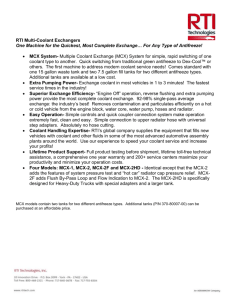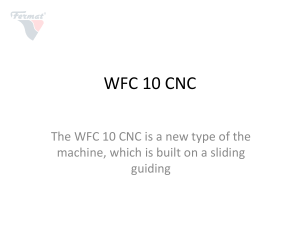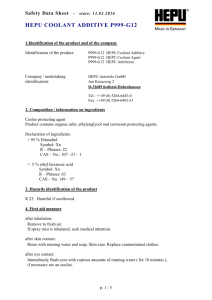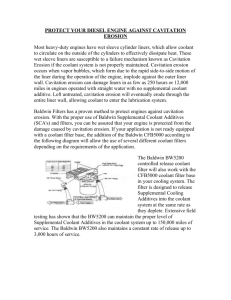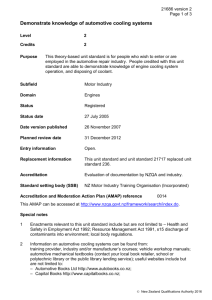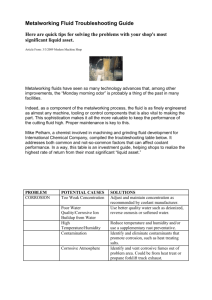Cooling System: Technical Service Bulletins
advertisement
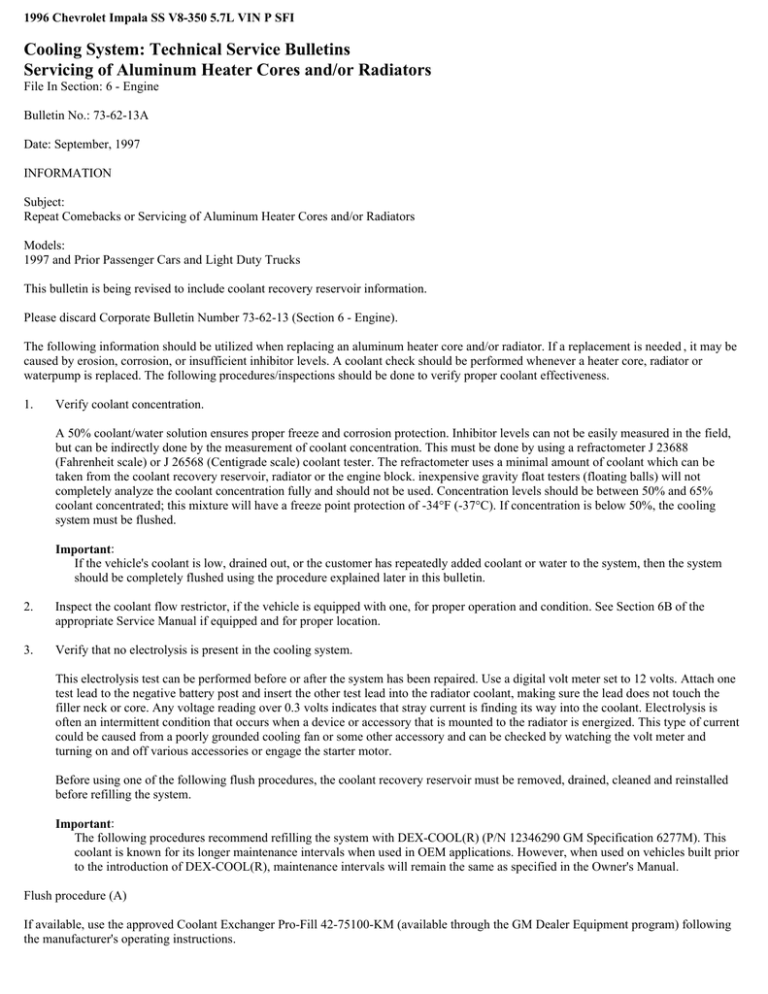
1996 Chevrolet Impala SS V8-350 5.7L VIN P SFI Cooling System: Technical Service Bulletins Servicing of Aluminum Heater Cores and/or Radiators File In Section: 6 - Engine Bulletin No.: 73-62-13A Date: September, 1997 INFORMATION Subject: Repeat Comebacks or Servicing of Aluminum Heater Cores and/or Radiators Models: 1997 and Prior Passenger Cars and Light Duty Trucks This bulletin is being revised to include coolant recovery reservoir information. Please discard Corporate Bulletin Number 73-62-13 (Section 6 - Engine). The following information should be utilized when replacing an aluminum heater core and/or radiator. If a replacement is needed , it may be caused by erosion, corrosion, or insufficient inhibitor levels. A coolant check should be performed whenever a heater core, radiator or waterpump is replaced. The following procedures/inspections should be done to verify proper coolant effectiveness. 1. Verify coolant concentration. A 50% coolant/water solution ensures proper freeze and corrosion protection. Inhibitor levels can not be easily measured in the field, but can be indirectly done by the measurement of coolant concentration. This must be done by using a refractometer J 23688 (Fahrenheit scale) or J 26568 (Centigrade scale) coolant tester. The refractometer uses a minimal amount of coolant which can be taken from the coolant recovery reservoir, radiator or the engine block. inexpensive gravity float testers (floating balls) will not completely analyze the coolant concentration fully and should not be used. Concentration levels should be between 50% and 65% coolant concentrated; this mixture will have a freeze point protection of -34°F (-37°C). If concentration is below 50%, the cooling system must be flushed. Important: If the vehicle's coolant is low, drained out, or the customer has repeatedly added coolant or water to the system, then the system should be completely flushed using the procedure explained later in this bulletin. 2. Inspect the coolant flow restrictor, if the vehicle is equipped with one, for proper operation and condition. See Section 6B of the appropriate Service Manual if equipped and for proper location. 3. Verify that no electrolysis is present in the cooling system. This electrolysis test can be performed before or after the system has been repaired. Use a digital volt meter set to 12 volts. Attach one test lead to the negative battery post and insert the other test lead into the radiator coolant, making sure the lead does not touch the filler neck or core. Any voltage reading over 0.3 volts indicates that stray current is finding its way into the coolant. Electrolysis is often an intermittent condition that occurs when a device or accessory that is mounted to the radiator is energized. This type of current could be caused from a poorly grounded cooling fan or some other accessory and can be checked by watching the volt meter and turning on and off various accessories or engage the starter motor. Before using one of the following flush procedures, the coolant recovery reservoir must be removed, drained, cleaned and reinstalled before refilling the system. Important: The following procedures recommend refilling the system with DEX-COOL(R) (P/N 12346290 GM Specification 6277M). This coolant is known for its longer maintenance intervals when used in OEM applications. However, when used on vehicles built prior to the introduction of DEX-COOL(R), maintenance intervals will remain the same as specified in the Owner's Manual. Flush procedure (A) If available, use the approved Coolant Exchanger Pro-Fill 42-75100-KM (available through the GM Dealer Equipment program) following the manufacturer's operating instructions. Flush procedure (B) If a Coolant Exchanger Pro-Fill is not available, drain coolant and dispose of properly following the draining procedures in Section 6B of the appropriate Service Manual. Refill the system using pure water and run vehicle until thermostat opens. Repeat and run vehicle t hree (3) times to totally remove old coolant or until drained coolant is almost clear. Once the system is completely flushed, refill the cooling system to a 50%-60% concentration with DEX-COOL(R) (P/N 12346290 GM Specification 6277M) following the refill procedures in Section 6B of the appropriate Service Manual. If a Service Manual is not available, fill half the capacity of the system with 100% DEX-COOL(R) (P/N 12346290 GM Specification 6277M). Then slowly add clean water to system until the level of the coolant mixture has reached the base of the radiator neck. Wait two (2) minutes and recheck coolant level. If necessary, add clean water to restore coolant to the appropriate level. Once the system is refilled, recheck the coolant concentration using a refractometer J 23688 (Fahrenheit scale) or J 26568 (Centigrade scale) coolant tester. Concentration levels should be between 50% and 65%. Parts are currently available from GMSPO.
